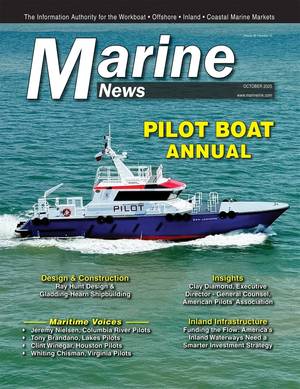Over the past year, 29,646 seagoing vessels entered the port of Rotterdam, up more than 600 from 2016's 29,022.
The number of incidents in the port fell from 159 to 129, and included one ‘serious accident’ involving an inland vessel that went adrift after hitting a groyne with its rudder.
According to National Harbour Master René de Vries, the decrease in the number of minor incidents can be explained by the Port Authority’s investments in infrastructure in recent years: “Thanks to the new buoy configurations and dolphins, there were considerably fewer minor bollard-ship collisions and fewer barges went adrift due to bad weather,” he said.
Efficiency in inspections continued to increase further in 2017, according to the port. Over the past five years, the number of inspections decreased from 11,000 to approximately 8,500. For example, 2017 was the first year in which the Seaport Police and the port authority held joint inspections of pleasure craft in the port area.
There was a significant drop in the number of minor spills, although the port authority said it is still working to determine what contributed to this decrease. The total volume of spilled liquid was more or less equal to last year however. This is mainly due to a spill in the Botlek area.
The past year marks the port authority’s first participation in a pilot project that focuses on autonomous shipping. The Harbour Master expects this trend to become explicitly relevant for Rotterdam in the medium term and is introducing standardisations with the port’s Traffic Guidance System to prepare it accordingly.
In 2018, the port authority will continue to participate in pilot projects that take structural advantage of autonomous shipping – and unmanned aircraft – in its own operations.
2017 saw various worldwide agreements being signed about international terminology within the shipping sector. This development is important for the PRONTO (Port Rendezvous Of Nautical and Terminal Operations) project, an online communications platform supporting ship agents and other operators. The main objective is to realize a more transparent and efficient planning of ship services, including pilotage and the use of terminal and bunker services. This results in fewer and shorter delays.
The port authority wants to encourage the transition from fuel oil to liquefied natural gas (LNG) as a transport fuel for the shipping sector. Over the past few years, the port authority has worked to prepare systems and staff for the arrival of LNG-powered vessels.
2017 saw the first LNG bunker vessel, the Cardissa, become operational in Rotterdam’s port area. The relevant legislation and regulations have been improved and updated to enable the smoother bunkering of LNG. “We expect that by 2020, LNG bunkering will be a routine operation in the port of Rotterdam,” said René de Vries.


 Read the Magazine
Read the Magazine
